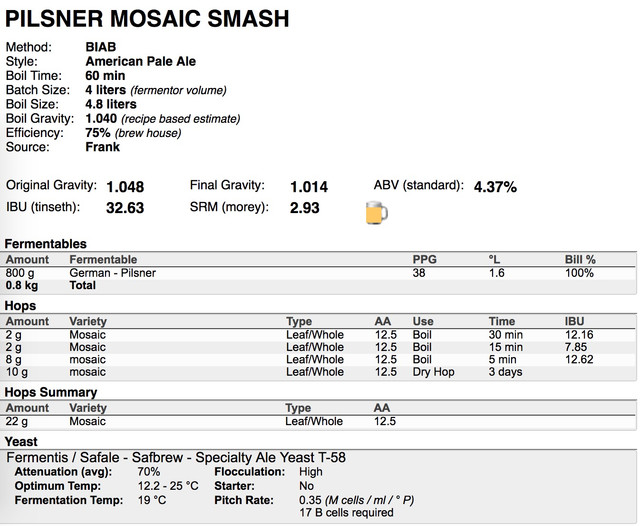Feedback:
All things being equal, this would be a clean, crisp beer with bready pils malt character and of course, nice Mosaic tropical aroma/flavor. The yeast will definitely be a major factor though, being that it is T-58 which is a Belgian dry yeast. At least be aware of that. It is not a "clean" yeast per se. Fermentation temperature will be important.
Second, you're aiming for fairly low original gravity (1.048), so don't mash high. The "best" way to get the most out of a low gravity beer is actually to mash
low and long, followed by a short rest up high. That's complicated for a beginner, though, so don't bother. Instead, just stick to the 150F advice. That's low enough, but not so low that your beer will have no dextrins in the wort and will lack body. I recommend mashing for 75-90 minutes, though. You want this to ferment well.
The above is especially true if you don't achieve the efficiency you have in your recipe, which is likely for a first time AG brewer. You may very well come in below 1.048. Might want to adjust the efficiency down to at least 70%.
Finally, it's an extremely pale beer. Such beers require acidification in the mash most of the time. Do you know anything about the water you'll use? Is it tap, spring, distilled, well water, etc.? Water is a whole can of worms, but there are some styles of beer where you can get away with being a bit ignorant about it. Very pale beer, though, perhaps not so much.
Now, you can ignore literally everything I said and this may work out just fine! Welcome to home brewing.

It's a very simple recipe, but one that can easily bring out flaws in process because of its delicate nature.






